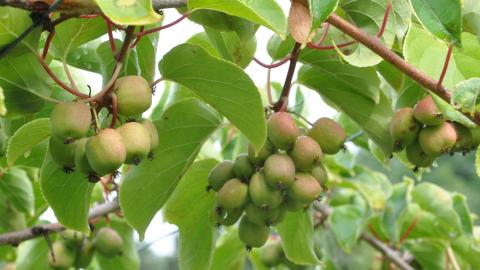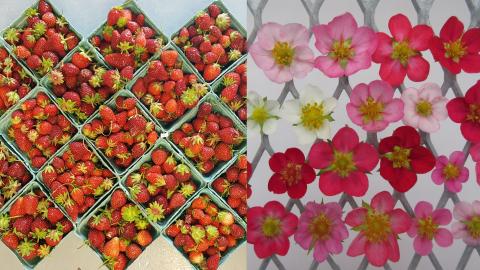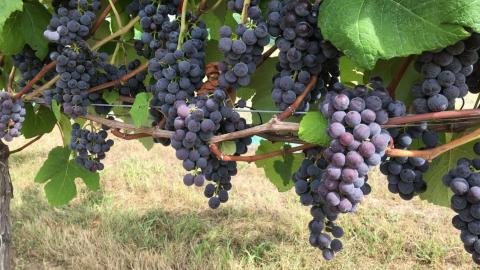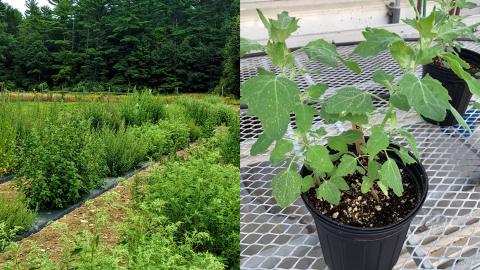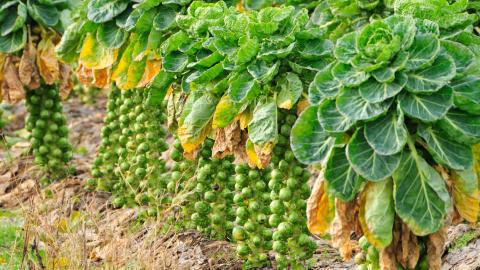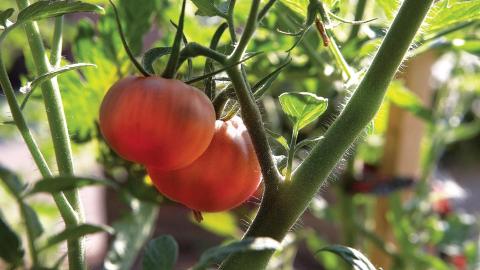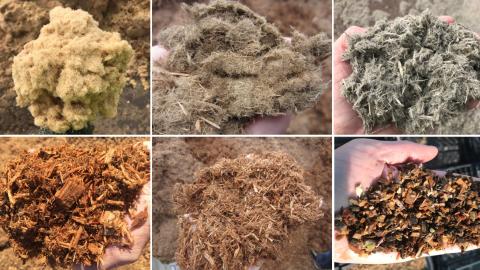NHAES INSPIRED Horticultural Report, Summer 2022
What's inside the Inspired Horticultural Research Report?
The research briefs in this report cover a diverse set of issues and exciting opportunities for horticultural production in the Granite State and northern New England. The topics include using DNA-based methods to develop new crops for our region, testing alternative management approaches that could allow the production of warmer-climate crops in our state and determining whether seafood byproducts can be repurposed as biopesticides for tree fruits, to name just a few. Each brief offers a snapshot of the rigorous science and practical takeaways that can make individual farming operations more successful and, collectively, strengthen the Granite State through science.
Read and download a pdf version of the entire publication below, or check out the individual Inspired Horticultural research articles below. And sign up for the NHAES newsletter to receive the latest updates on future editions of the Inspired research report.
Research Inside
Hale I, Melo ATO, Gustafson H (2018). Sex-linked molecular markers for two cold-hardy kiwifruit species, Actinidia arguta and A. kolomikta. European Journal of Horticultural Science, 83(4), 236-246. DOI: 10.17660/eJHS.2018/83.4.4
Latocha P, Debersaques F, Hale I (2021). Actinidia arguta (Kiwiberry): Botany, Production, Genetics, Nutritional Value, and Postharvest Handling. Horticultural Reviews 48: 37-151.
Melo A, Bartaula R, Hale I (2016). GBS-SNP-CROP: a reference-optional pipeline for SNP discovery and plant germplasm characterization using variable length, paired-end genotyping-by-sequencing data. BMC bioinformatics 17(1)
Melo ATO and Hale I (2018). Expanded functionality, increased accuracy, and enhanced speed in the de novo genotyping-by-sequencing pipeline GBS-SNP-CROP. Bioinformatics. DOI: 10.1093/bioinformatics/bty873
Melo ATO, Guthrie RS, Hale I (2017). GBS-based deconvolution of the surviving North American collection of cold-hardy kiwifruit (Actinidia spp.) germplasm. PloS one 12(1), e0170580
Melo ATO and Hale I (2019). ‘apparent': a simple and flexible R package for accurate SNP-based parentage analysis in the absence of guiding information. BMC bioinformatics, 20(1), 108
Sideman, B. "Research Report: Figs for Cold Climates 2021." (2021). UNH Cooperative Extension. 18. https://scholars.unh.edu/extension/18
Vossbrinck, CR. (2015). Overwintering and propagation of figs in Connecticut. Connecticut Agricultural Experiment Station Fact Sheet.
Gadoury DM, MacHardy WE, and Rosenberger DA. (1989). Integration of pesticide application schedules for disease and insect control in apple orchards of the northeastern United States. Plant Disease. 73(2):98–105
MacHardy WE, and Gadoury DM. (1989). A revision of Mill's criteria for predicting apple scab infection periods. Phytopathology. 79:304–10
Sharp R. (2013). A Review of the Applications of Chitin and Its Derivatives in Agriculture to Modify Plant-Microbial Interactions and Improve Crop Yields. Agronomy. 3(4):757–93
Zhang H, Li R, and Liu W. (2011). Effects of chitin and its derivative chitosan on postharvest decay of fruits: A review. Int J Mol Sci. 12(2):917–34
Hanna, HY (2009). Influence of Cultivar, Growing Media, and Cluster Pruning on Greenhouse Tomato Yield and Fruit Quality. HortTechnology, 19(2).
Hesami, A., Khorami, S., and Hosseini, SS. (n.d.). Effect of Shoot Pruning and Flower Thinning on Quality and Quantity of Semi-Determinate Tomato (Lycopersicon esculentum Mill.). Not Sci Biol, 2012(1), 108–111. www.notulaebiologicae.ro
Mitchell, BA, Uchanski, ME, and Elliott, A. (2019). Fruit cluster pruning of tomato in an organic high-tunnel system. HortScience, 54(2), 311–316. https://doi.org/10.21273/HORTSCI13487-18
Pathirana, CK, Sajeevika, IDC, Pathirana, PRS, Fonseka, H, and Fonseka, RM. (2014). Effects of Canopy Management and Fruit Thinning on Seed Quality of Tomato (Solanum lycopersicum L.) Variety Thilina. In Tropical Agricultural Research (Vol. 25, Issue 2). http://agritech.tnau.ac.in/seed_certification
Slatnar, A, Mikulic-Petkovsek, M, Stampar, F, Veberic, R, and Kacjan Marsic, N. (2020). Influence of cluster thinning on quantitative and qualitative parameters of cherry tomato. European Journal of Horticultural Science, 85(1), 30–41. https://doi.org/10.17660/eJHS.2020/85.1.4
Fields JS, Fonteno WC, Jackson BE, Heitman JL, Owen JS. (2014). Hydrophysical Properties, Moisture Retention, and Drainage Profiles of Wood and Traditional Components for Greenhouse Substrates. Hortscience. 49(6):827–32
Harris CN, Dickson RW, Fisher PR, Jackson BE, Poleatewich AM. (2020). Evaluating Peat Substrates Amended with Pine Wood Fiber for Nitrogen Immobilization and Effects on Plant Performance with Container-grown Petunia. HortTechnology. 30(1):107–16
Jackson B. (2021). The Current State of Substrates in 2021. Grower Talks. 84(9):40–44
Jackson BE, Bartley P. (2017). Wood Substrates: The Plant's Perspective. Grower Talks, pp. 54–56
Raviv M, Lieth H. Soilless Culture: Theory and Practice: First Edition
